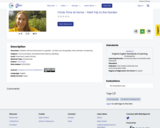
Children will be introduced to a garden. As they tour the garden, they will learn vocabulary.
- Subject:
- English Language Arts
- Material Type:
- Activity/Lab
- Author:
- Trish Reed
- Date Added:
- 04/26/2021

Children will be introduced to a garden. As they tour the garden, they will learn vocabulary.
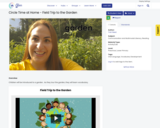
Children will be introduced to a garden. As they tour the garden, they will learn vocabulary.

Children will build background and vocabulary that will help them recite and comprehend "Humpty Dumpty".Children will learn to track the print in the nursery rhyme, understand the boundaries of words, and identify individual words.
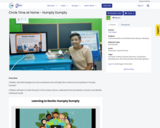
Children will build background and vocabulary that will help them recite and comprehend "Humpty Dumpty".
Children will learn to track the print in the nursery rhyme, understand the boundaries of words, and identify individual words.
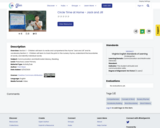
Section 1 - Children will learn to recite and comprehend the rhyme "Jack and Jill" and its vocabulary.Section 2 - Children will learn to track the print in the nursery rhyme, understand the boundaries of words, and identify individual words.
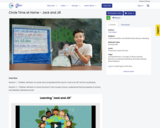
Section 1 - Children will learn to recite and comprehend the rhyme "Jack and Jill" and its vocabulary.
Section 2 - Children will learn to track the print in the nursery rhyme, understand the boundaries of words, and identify individual words.
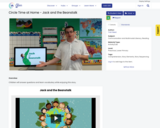
Children will answer questions and learn vocabulary while enjoying this story.
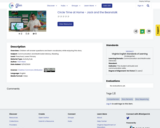
Children will answer questions and learn vocabulary while enjoying this story.

Children will learn to distinguish commonly confused letters M and W by discussing their slanted and straight lines. They will also learn fun ways to practice the formation of O, T, and D, using playdough and pipe cleaners.
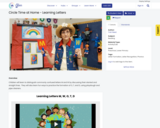
Children will learn to distinguish commonly confused letters M and W by discussing their slanted and straight lines. They will also learn fun ways to practice the formation of O, T, and D, using playdough and pipe cleaners.
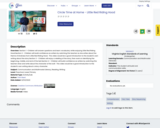
Section 1 -Children will answer questions and learn vocabulary while enjoying Little Red Riding Hood.Section 2 - Children will build confidence as writers by watching this teacher as she writes about the theme of kindness from Little Red Riding Hood. This video would be a good introduction to the student's own writing about the story.Section 3 - Children will enjoy a retelling of the story, then work on identifying the beginning, middle, and end of the text.Section 4 - Children will build confidence as writers by watching this teacher draw and write about the character of the wolf. This video would be a good introduction to the student's own writing about a story character.
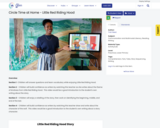
Overview
Section 1 -Children will answer questions and learn vocabulary while enjoying Little Red Riding Hood.
Section 2 - Children will build confidence as writers by watching this teacher as she writes about the theme of kindness from Little Red Riding Hood. This video would be a good introduction to the student's own writing about the story.
Section 3 - Children will enjoy a retelling of the story, then work on identifying the beginning, middle, and end of the text.
Section 4 - Children will build confidence as writers by watching this teacher draw and write about the character of the wolf. This video would be a good introduction to the student's own writing about a story character.
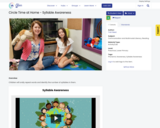
Children will orally repeat words and identify the number of syllables in them.
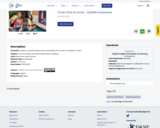
Children will orally repeat words and identify the number of syllables in them.
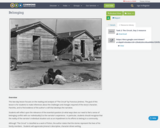
This two-day lesson focuses on the reading and analysis of “The Circuit” by Francisco Jiménez. The goal of this lesson is for students to make inferences about the challenges and changes required of the story’s character, Panchito, and to find evidence of the author’s craft that develops the narrative.Students will reflect upon the relevance of the essential question (In what ways does our need to feel a sense of belonging conflict with our individuality?) to the narrator's experience. In particular, students should recognize that the reality of the narrator's individual situation acts as an impediment to his efforts to belong to a community.Although "The Circuit" is classified as a work of fiction, the author states that the stories represent the lives of his family members. Students will appreciate Jimenez's descriptive, character-driven writing.
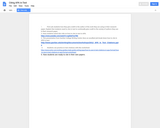
For this lesson, students will learn through a video and powerpoint presentation how to cite in-text in APA format. Students will have an opportunity to practice citing in-text before citing in their own APA research paper.
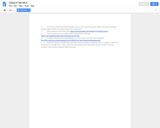
For this lesson, students will learn how to cite in-text in MLA. They will watch a video, be directed to an easy to understand web page with citation examples, and even be able to complete a worksheet on citing in-text in MLA. Once students are done with this lesson, they will be ready to cite in-text in their own research paper.
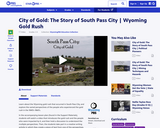
Learn about the Wyoming gold rush that occurred in South Pass City, and explore the varied perspectives of the people who experienced the gold rush in the 1840’s-1860’s.
In the accompanying lesson plan (found in the Support Materials), students will watch a video that introduces the gold rush and the people who were impacted by it, and then hold a discussion to understand the multiple perspectives. Then, the students take part in a creative writing activity in which they create a piece of text from one of the perspectives.
LEARNING OBJECTIVES:
Students will develop grade level appropriate speaking and listening skills, as described by the standards.
Students will learn how to write a fictional narrative based on nonfiction resources, following a set of parameters.
Students will understand the motivations and perspectives of various people during the Wyoming gold rush.
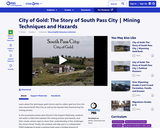
Learn about the techniques gold miners used to collect gold ore from the area around South Pass City, as well as the hazards they faced during the mining process.
In the accompany lesson plan (found in the Support Materials), students will watch a video that explains the mining process and hazards, and then create caution signs to show their understanding of the challenges the miners faced. Finally, the students will take part in a collaborative STEM challenge to build a working hoist using a limited amount of supplies.
LEARNING OBJECTIVES:
Students will develop grade level appropriate speaking and listening skills, as described by the standards.
Students will understand how technology impacted the mining process of early gold miners, as well as the hazards the miners faced.
Students will define a design problem and use limited resources to solve it.

"This course is an introduction to the history, theory, practice, and implications of rhetoric, the art and craft of persuasion throughAnalyzing persuasive texts and speechesCreating persuasive texts and speechesThrough class discussions, presentations, and written Assignments and Labs, you will get to practice your own rhetorical prowess. Through the readings, you'll also learn some ways to make yourself a more efficient reader, as you turn your analytical skills on the texts themselves. This combination of reading, speaking, and writing will help you succeed in:learningto read and think criticallytechniques of rhetorical analysistechniques of argumentto enhance your written and oral discourse with appropriate figures of speechsome techniques of oral presentation and the use of visual aids and visual rhetoric."